The Hollywood Revue of 1929
________________________________________
Wikipedia extract, with some of the spelling and grammar errors corrected:
The Hollywood Revue of 1929 is a part Technicolor Metro-Goldwyn Mayer American musical-comedy film. It was the studio’s second feature-length musical, and one of the earliest ventures into the talkie format. Produced by Harry Rapf and directed by Chuck Riesner, the film brought together some of MGM’s most popular performers in a lavish two-hour revue. The two masters of ceremonies are Conrad Nagel and Jack Benny.
Unlike M-G-M’s imposing feature films, which always boasted strong story values, The Hollywood Revue of 1929 was a plotless parade of variety acts. Conrad Nagel, interviewed for the book “The Real Tinsel”, recalled, “Everybody thought Harry Rapf was crazy for making it.” Billed as an “All-Star Musical Extravaganza,” the film includes performances by once and future stars, including Joan Crawford singing and dancing on stage (She later remarked, “Revue was one of those let’s-throw-everyone-on-the-lot-into-a musical things, but I did a good song-and-dance number.”). Other segments feature Lionel Barrymore, Marion Davies, Gus Edwards, John Gilbert, Buster Keaton, Marie Dressler, Anita Page, Norma Shearer, and the comedy team of Karl Dane and George K. Arthur. Highlights of the film are musical performances (including the debut of “Singin’ in the Rain”) performed initially by Cliff Edwards (“Ukulele Ike”) and later performed at the end of the film by the entire cast) and a comedy routine starring Stan Laurel and Oliver Hardy as inept magicians. The only major M-G-M stars missing from the revue are Greta Garbo, Ramón Novarro, and Lon Chaney, Sr. (Although Chaney is referred to by name in one of the songs performed).
(above) Charles King, Joan Crawford, Conrad Nagel, and Cliff Edwards
I Never Knew I Could Do a Thing Like That (Gus Edwards, Joe Goodwin) – Bessie Love
Video clip presently unavailable
_________________________
For I’m the Queen (Andy Rice and Martin Broones) – sung by Marie Dressler and chorus
.
(above) Joan Crawford and Conrad Nagel; (below) Joan Crawford sings and dances to “Got a Feelin’ for You”
Got a Feelin’ for You (Jo Trent, Louis Alter)
Joan Crawford with piano accompaniment and, according to legendaryjoancrawford.com, the ‘Biltmore Quartet’ (but see my notes regarding this identification in the page on The Broadway Melody)
.
Minstrel Days production number. It’s basically a medley of two new songs, but also includes brief segments of two Stephen Foster classics (credits adapted from IMDb):
- “Minstrel Days” (Gus Edwards, Joe Goodwin) (1929)
Sung offscreen by Charles King, performed by the chorus - “Old Folks at Home” (Stephen Foster,1851) aka “Swanee River”
Sung offscreen by Charles King and chorus - “Old Black Joe” (Stephen Foster,1860)
Sung offscreen by Charles King and chorus - “Low Down Rhythm” (Jesse Greer, Raymond Klages) (1929)
Sung by June Purcell, and danced by her and chorus
Video presently unavailable
_____________________________
Your Mother and Mine (Gus Edwards, Joe Goodwin) – sung by Charles King and chorus
.
You Were Meant for Me (Nacio Herb Brown, Arthur Freed) – sung by Conrad Nagel (voice dubbed by Charles King) to Anita Page
.
Nobody But You (Gus Edwards, Joe Goodwin) – Cliff Edwards, accompanying himself on ukulele, and chorus
.
(above) chorus girls from the The Hollywood Revue of 1929; (below) Marion Davies
Tommy Atkins on Parade (Nacio Herb Brown, Arthur Freed) – sung and danced by Marion Davies and a chorus of men dressed in uniforms resembling those of British Palace Guards
.
The Brox Sisters in the Singin’ in the Rain number of The Hollywood Revue of 1929
Singin’ in the Rain (Nacio Herb Brown, Arthur Freed) – Cliff Edwards as Ukulele Ike introduces the number. At about 2:34 the chorus is taken up briefly by a male vocal harmony group (offscreen); then come the Brox Sisters, followed by another turn by the men.
.
Charlie, Ike, and Gus (Gus Edwards, Joe Goodwin) – introduced by Jack Benny, performed by Charles King, Cliff Edwards, and Gus Edwards
.
Lon Chaney’s Gonna Get You If You Don’t Watch Out – sung by Gus Edwards
.
Orange Blossom Time (m. Gus Edwards, w. Joe Goodwin)
The Albertina Rasch Ballet performs a dance staged by Sammy Lee in a production number, filmed in two-strip Technicolor, for the song Orange Blossom Time. Sung by Charles King to Myrtle McLaughlin. One site mentions another group, the Belcher Child Dancers performing as “pirouetting blossoms” in the number. I found no evidence of pirouetting blossoms in the clip of the number I previously included here, but I believe the Belcher Dancers may drop from the sky on swings in the ensemble finale.
- presently unavailable due to a copyright claim by Warner Bros. Entertainment
_____________
Singin’ in the Rain – finale
.
Well, almost The End…
There are several numbers listed in the IMDb Soundtracks page for the film that Wikipedia, which uses “the circulating print,” does not include in its Musical Numbers lists. I haven’t found all of them in video libraries, but here is one which I couldn’t find when looking for it, that turned up during a search for numbers from another film.
 Tableau of Jewels (Fred Fisher) – It is sung by James Burroughs, according to the YouTube provider; IMDb says that it is “[s]ung by an unidentified male.” The number is danced to, according to IMDb, by Carla Laemmle and Buster Keaton in drag. However, Keaton does not appear in this number. He is in drag in a comic number called The Dance of the Sea which I’ve excluded because the quality of the clip in a video I found was rather poor. I’ve also omitted comic skits involving Jack Benny, Laurel and Hardy, and others.
Tableau of Jewels (Fred Fisher) – It is sung by James Burroughs, according to the YouTube provider; IMDb says that it is “[s]ung by an unidentified male.” The number is danced to, according to IMDb, by Carla Laemmle and Buster Keaton in drag. However, Keaton does not appear in this number. He is in drag in a comic number called The Dance of the Sea which I’ve excluded because the quality of the clip in a video I found was rather poor. I’ve also omitted comic skits involving Jack Benny, Laurel and Hardy, and others.
The actress Rebecca Isabelle “Carla” Laemmle (right) emerges from a giant shell to dance before the tableau. She is is the niece of Universal Pictures founder Carl Laemmle. Carla had small roles in films from 1925 to the late 1930s, then briefly came out of retirement to play a vampire in The Vampire Hunters Club (2001)
Songwriter Fred Fisher is perhaps best-known for hits such as “Chicago (That Toddlin’ Town),” “Come Josephine in My Flying Machine” (lyrics by Alfred Bryan), and “Dardanella” (lyrics by Felix Bernard and Johnny S. Black).
_________________________
.
(above) Nacio Herb Brown and Arthur Freed
_______________________
















































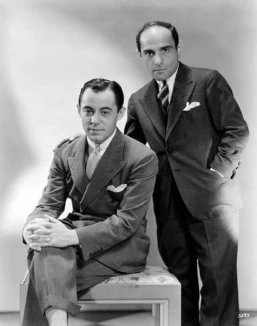

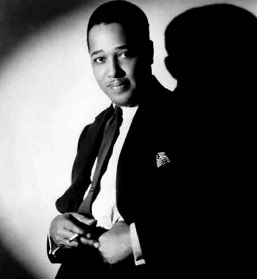


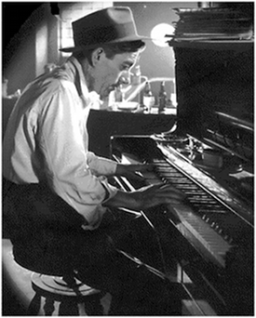
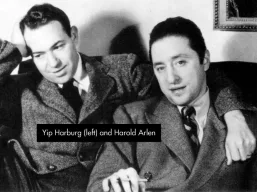




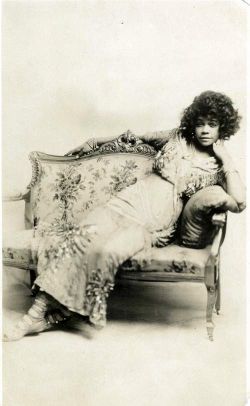










Dec 03, 2012 @ 10:06:40
Wow! I was looking for a bit of 1929 to “freshen up” a letter to my aunt, who was just 15 in 1929, hoping to throw in a little spice to offset the dour reality of the stock market crash and here I am! Wonderful site, wonderful show, wonderful memories for a dearly beloved “old girl”. Thanks for this wonderful opportunity to relive her childhood!
LikeLiked by 1 person